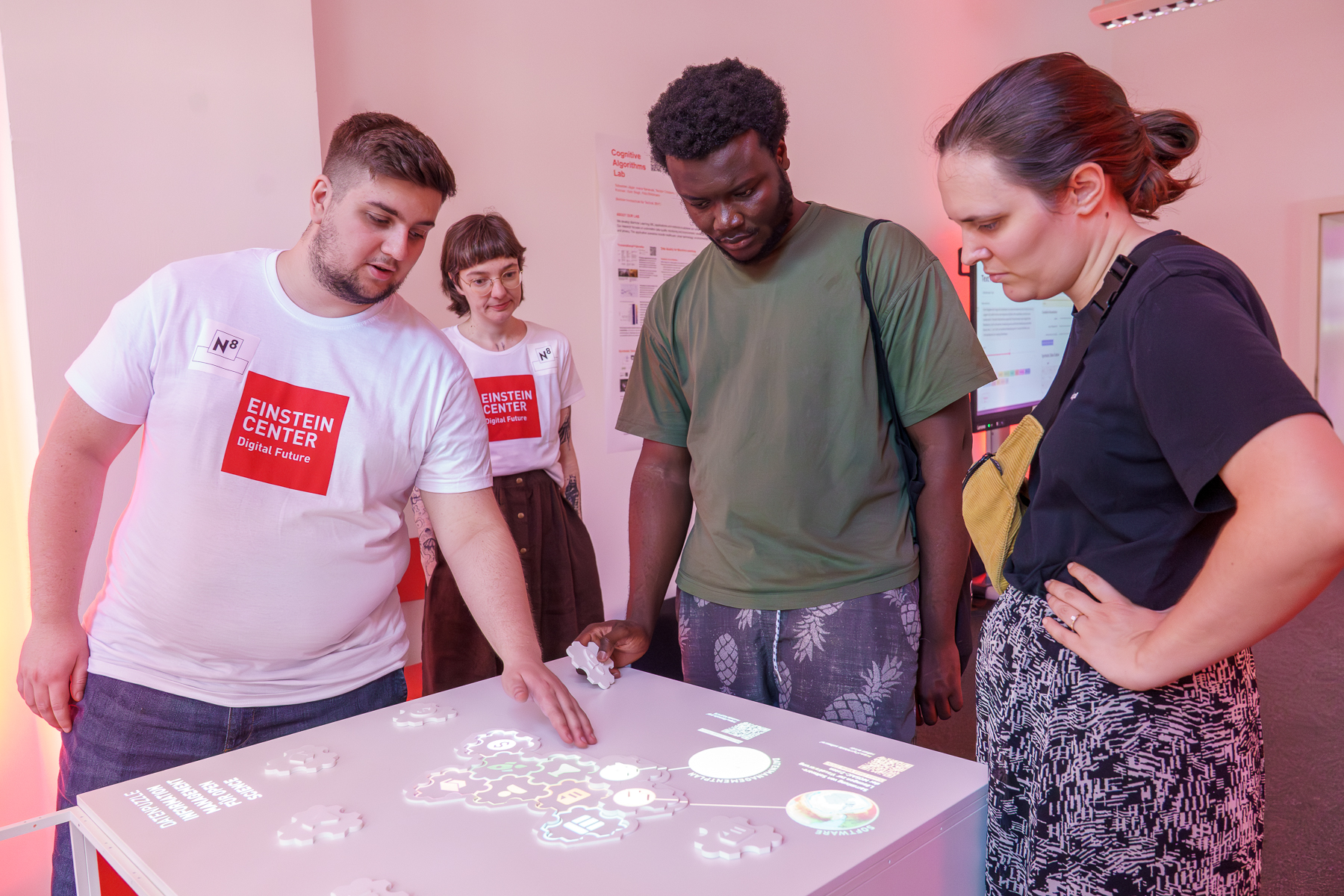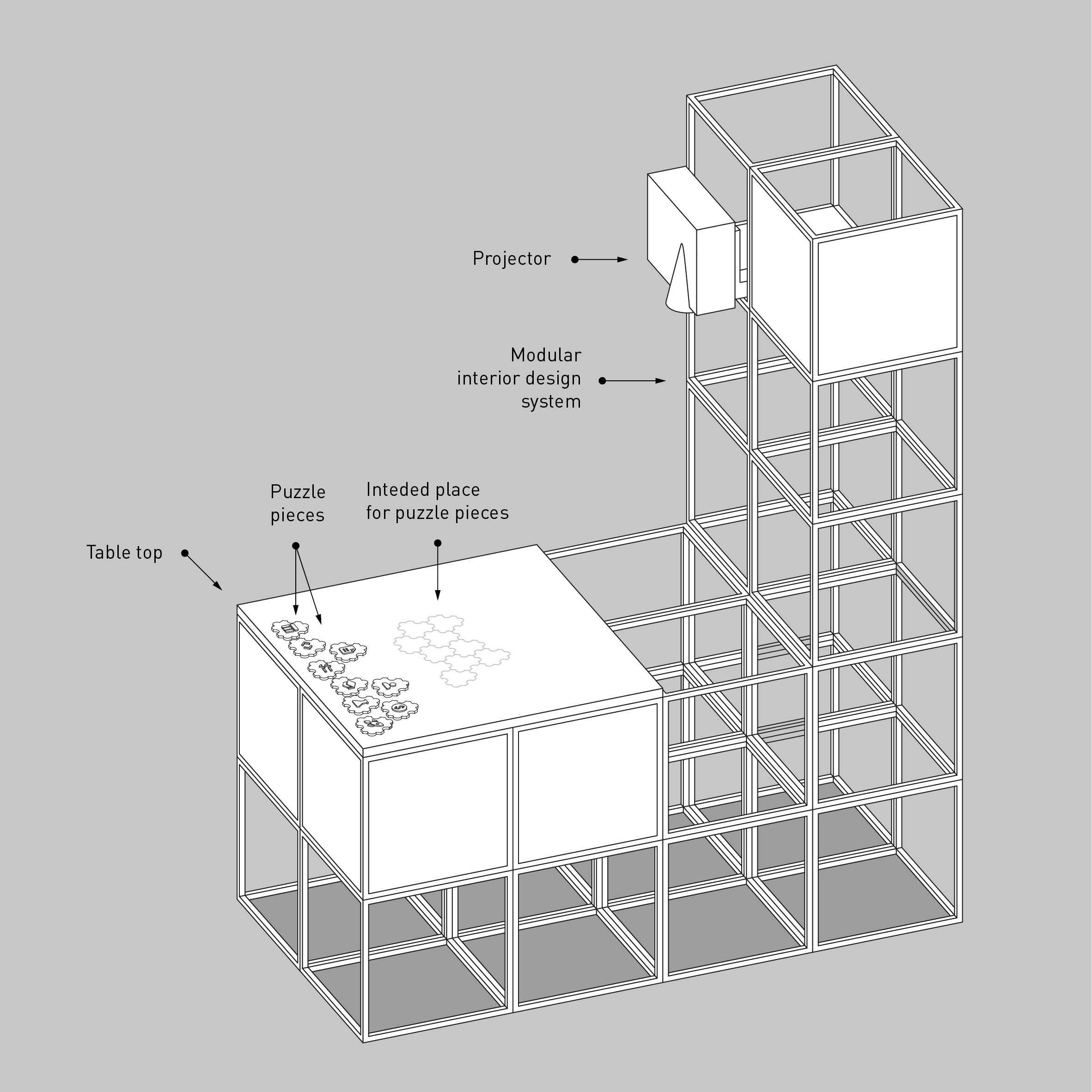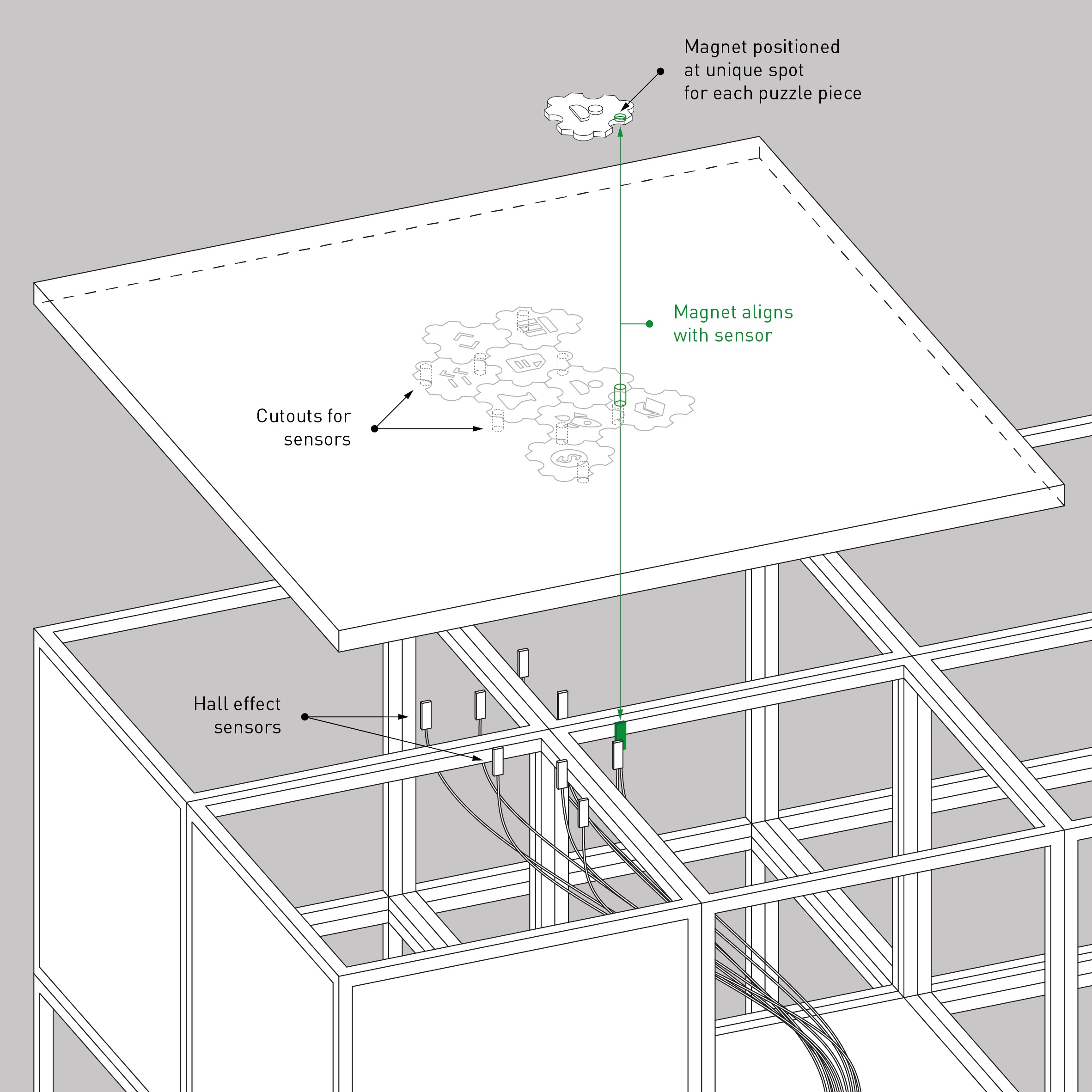The Long Night of Science (Lange Nacht der Wissenschaften - LNdW) is one of the most well-known public science events in Germany, providing research institutions with a platform for science communication. During this annual event, researchers present their work to an interested and engaged public.
Our research group at the Berlin School of Library and Information Science (IBI) at Humboldt-Universität zu Berlin participated in the Berlin event for the first time this year, joining the celebration of LNdW’s 25th anniversary (Pampel et al. 2025).
Through our affiliation with the Einstein Center Digital Future (ECDF), we had the opportunity to collaborate with Friedrich Schmidgall, head of the ECDF Micro Factory, to develop a hands-on exhibit showcasing our research in the field of information management.
The ECDF Micro Factory provides ECDF researchers with space and experimental formats to explore ideas and create solutions outside of traditional academic structures. It offers both conceptual and technical support for the development of tangible and digital objects, using prototyping methods ranging from paper and cardboard to mockups and 3D-printed materials.
Our goal was to convey key concepts of Information Management and Open Science practices in a playful and accessible way. In our initial discussions with Friedrich Schmidgall, we came up with the idea of an animated “data puzzle” titled Information Management for Open Science, designed to illustrate two central themes of our research.
Friedrich Schmidgall then transformed our idea into an interactive exhibit in the form of a physical puzzle and a projected animation.
The installation featured a tabletop puzzle illuminated by an overhead projector. At first glance, visitors saw only projected outlines on the table surface, indicating empty spaces for the puzzle pieces, each marked with a unique icon representing a specific subject of the “data puzzle”. The interactive experience invited participants to find physical puzzle pieces with matching icons and place them in their designated spaces. With each correct placement, a new segment of the larger “data puzzle” emerged, revealing subject-specific information and QR codes that linked to an identifier online. As the puzzle took shape piece by piece, the complete visualization gradually emerged, guiding visitors through concepts of information management with both visual and tactile exploration.

To enable this interaction, we fitted the nine laser-cut acrylic puzzle pieces with uniquely positioned magnets. These magnets interacted with Hall effect sensors embedded in the tabletop surface. Only correctly placed puzzle pieces aligned their magnet with a sensor, thus triggering the projection of the corresponding segment of the “data puzzle”. The sensors were connected to an Arduino microcontroller running Firmata, communicating sensor data to a host computer through serial connection. Processing of the sensor data and projection control were handled by the programmable multimedia toolkit vvvv beta. The vvvv patch also included a GUI that allowed fine-tuning of the projection’s position and scale, ensuring proper alignment even if the projector was not mounted perfectly.

We tested the object in various research contexts. In the first version, we used an abstract example unrelated to a specific research project. During the trials, we found that explaining the interplay between people, projects, research data, infrastructures, and other resources of scholarly work often required concrete, real-world examples. In response, our second prototype used developments in CRISPR gene editing as a case study, which, while more engaging, highlighted specific challenges in communicating aspects of Open Science in the life sciences.

We ultimately selected the MOSAiC expedition as the central example for our installation, the largest Arctic research expedition in history. Its relevance to climate research and the use of a large-scale research infrastructure, namely, research vessel Polarstern, offered an ideal context for conveying fundamental concepts of Information Management.
The interactive “data puzzle” was first presented to the public at the opening of the Long Night of Science on July 13, 2025.
The photos in this blog post provide a few glimpses of the exhibit in action. We were thrilled by the remarkable interest it generated. Until close to midnight, we presented our work in rotating shifts. Since the object was not entirely self-explanatory, it sparked many engaging conversations that also gave us an opportunity to reflect on our own research.

Further information about the research group can be found on our website.
This text – excluding quotes and otherwise labelled parts – is licensed under the CC BY 4.0 DEED.
References
Citation
@online{pampel2025,
author = {Pampel, Heinz and Schmidgall, Friedrich and Rothfritz, Laura
and Liebel, Max and Schielke, Johanna},
title = {Long {Night} of {Science} 2025: {Communicating} {Information}
{Management} with a {Data} {Puzzle} on {Open} {Science}},
date = {2025-07-31},
url = {https://doi.org/10.59350/bd65p-7r071},
langid = {en}
}